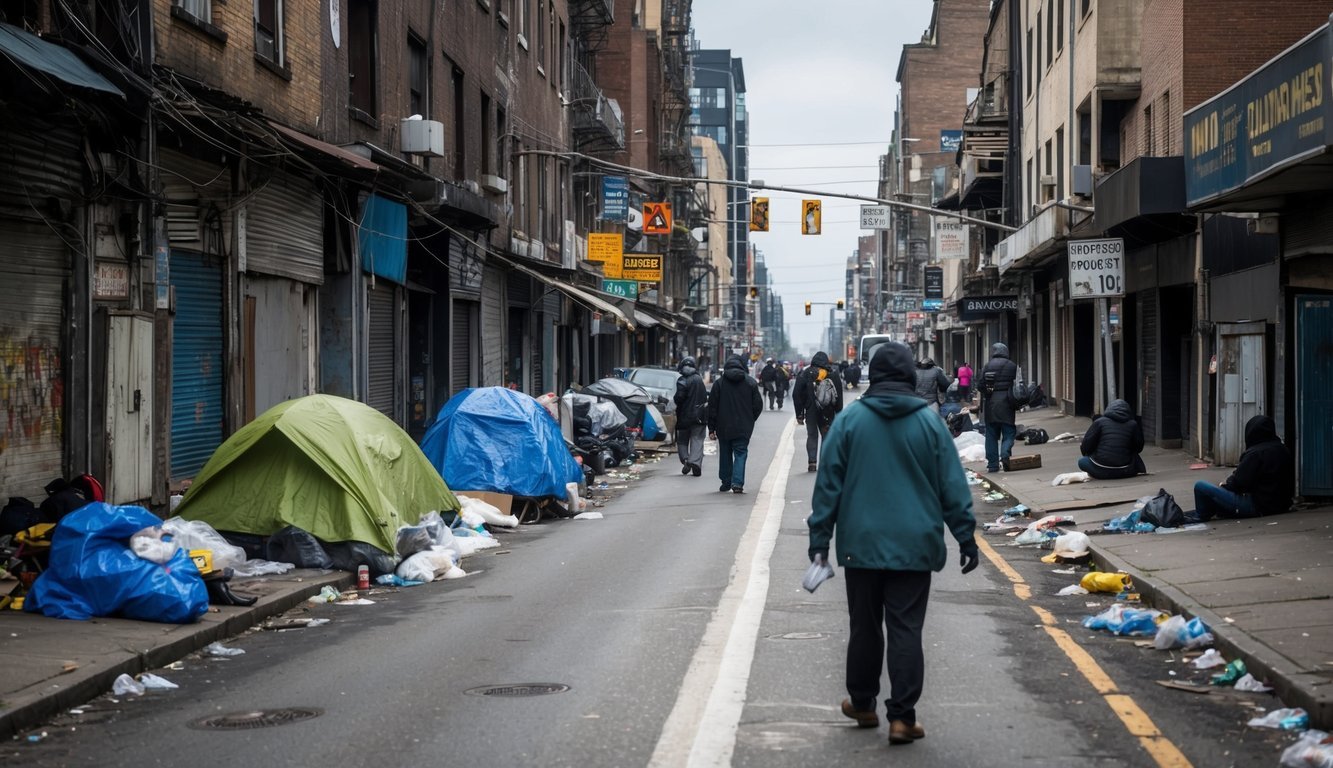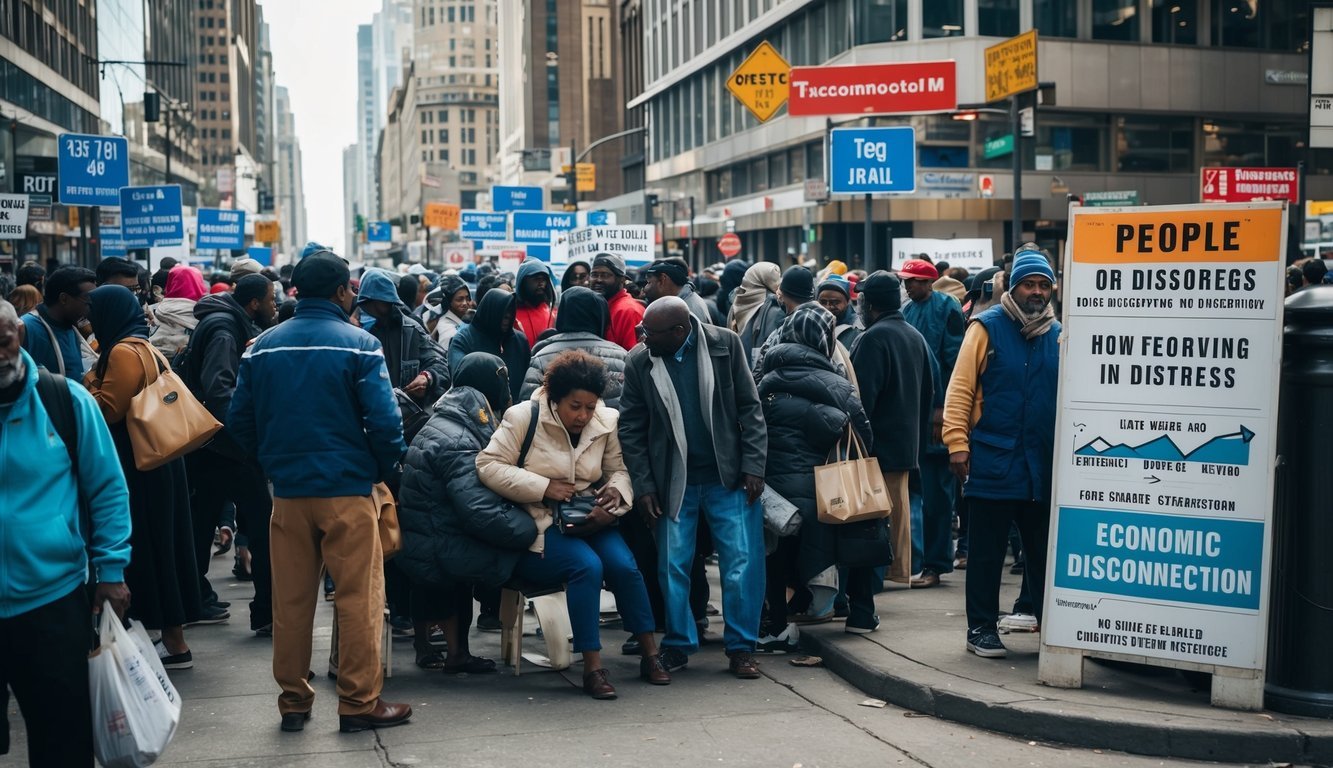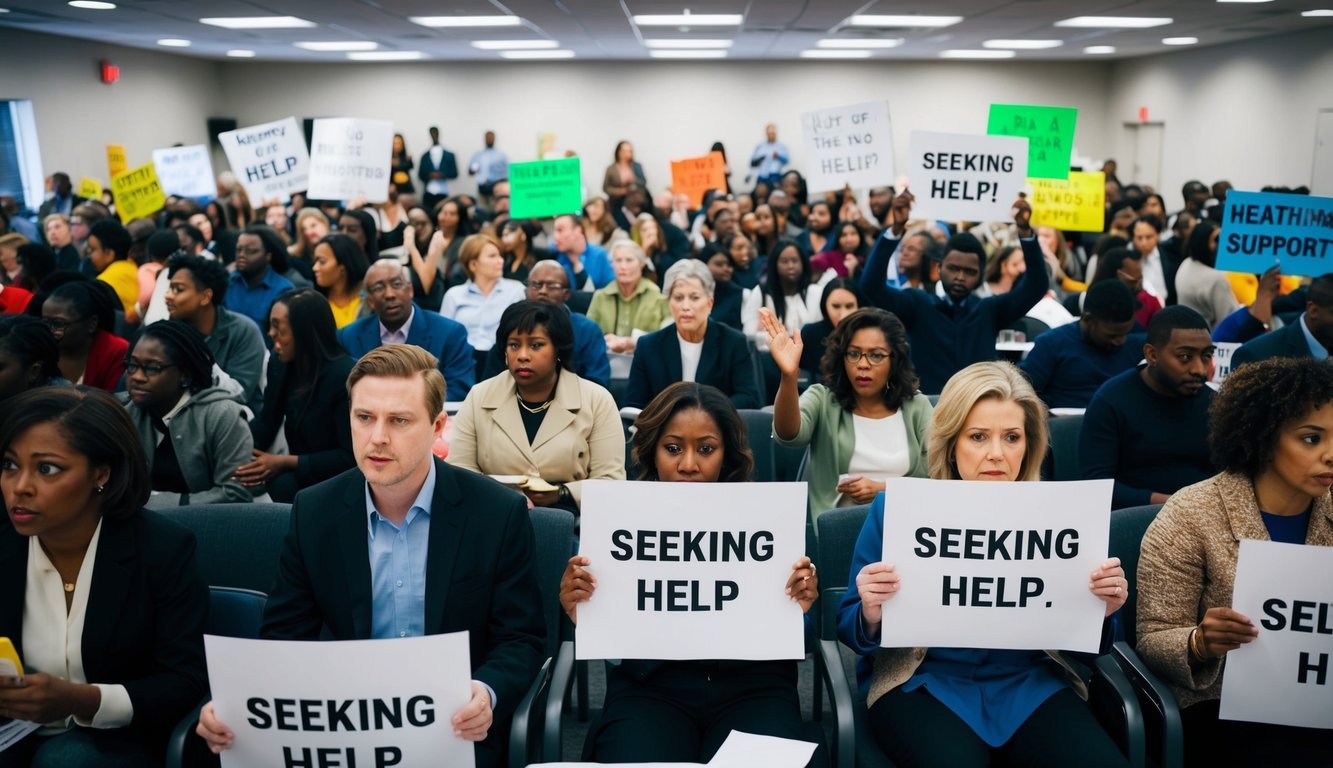PsychNewsDaily Publishers
100 Summit Drive
Burlington, MA, 01803
Telephone: (320) 349-2484
PsychNewsDaily Publishers
100 Summit Drive
Burlington, MA, 01803
Telephone: (320) 349-2484
Mental distress in the U.S. increased from 3.6% in 1993 to 6.4% in 2019, with heightened anxiety and depression exacerbated by the COVID-19 pandemic and socioeconomic factors.

Mental distress among Americans has become a growing concern in recent years. According to recent studies, the percentage of people experiencing extreme distress has risen sharply, from about 3.6% in 1993 to 6.4% in 2019.
This alarming trend highlights the need for greater awareness and support for mental health issues in the country.
Specifically, low-education midlife White individuals have seen even higher rates, with reported numbers more than doubling. As the pressures of everyday life increase, more people are finding it difficult to cope. Understanding the factors contributing to this increase can help bring attention to solutions and resources available for those in need.
This blog post will explore the reasons behind the rise in extreme distress, its effects on individuals and communities, and what can be done to address this critical issue. The conversation about mental health is more important now than ever, and it’s vital to ensure that no one feels they have to struggle alone.

The COVID-19 pandemic has had a significant effect on mental health across the United States. Many individuals are experiencing heightened levels of anxiety and depression during these challenging times. It is especially concerning for certain age groups, including young adults, who have faced serious mental health challenges.
During the pandemic, symptoms of anxiety and depression increased sharply in many Americans. Research indicates that rates of anxiety ranged from 6.3% to 50.9%, while depression symptoms were noted between 14.6% to 48.3%. Such high figures reflect how the fear of illness, job loss, and social isolation contributed to mental health struggles.
These increases are more pronounced in people who lost their jobs or faced significant economic challenges. With uncertainty surrounding health and finances, many individuals found it hard to cope. Emotional distress escalated, leading to a worrying rise in cases of post-traumatic stress disorder, which affected 7% to 53.8% of respondents.
Young adults in particular faced unique challenges during the pandemic. Many transitioned to remote learning or lost job opportunities due to closures. This abrupt shift led to feelings of isolation and disconnection, worsening mental health for this age group.
A recent study indicated that about 24% of young adults reported experiencing moderate to severe depression. These feelings of loneliness and anxiety were exacerbated by the lack of social interaction and support. Mental health resources became critical during this time, yet many young people found it hard to seek help. Addressing these concerns is essential for their recovery and well-being.

Socioeconomic factors play a significant role in affecting psychological distress levels among Americans. Fluctuations in income and job loss can have profound impacts, particularly for certain racial and ethnic groups. Understanding these influences helps highlight why some populations experience distress more acutely.
Income changes can greatly affect mental health. Research shows that income losses impact mental health more than income gains. When individuals face reduced income, stress levels often rise. Financial problems can lead to feelings of insecurity, anxiety, and hopelessness.
Job loss is another critical factor. Losing a job can bring not only financial difficulties but also a sense of identity loss. People often tie their self-worth to their jobs. Those in midlife may feel particularly distressed due to family responsibilities.
In short, a decrease in income and job security is linked to higher psychological distress. This relationship shows how important stable jobs and income are for mental well-being.
Certain racial and ethnic groups often face heightened levels of psychological distress. Economic inequality can lead to greater vulnerability among these populations. For example, people from low-income backgrounds may struggle more during economic downturns.
Studies indicate that minorities not only face financial stressors but also additional societal pressures. Discrimination and systemic barriers can increase feelings of anxiety. These challenges can lead to chronic stress, further affecting mental health.
For instance, low-education White individuals also experience significant distress. Yet, disparities exist in how different groups cope with these pressures. Understanding these unique challenges is crucial for addressing mental health needs effectively.

Building strong social connections plays a key role in improving community and personal well-being. Addressing mental health issues such as anxiety and depression is important for everyone. Understanding the factors behind deaths of despair can help communities become more supportive.
Social connections are crucial for mental health. Research shows that feeling connected reduces feelings of loneliness and isolation. Communities can encourage these connections through various activities.
Ways to strengthen social connections:
By fostering these connections, community members can better support one another, reducing anxiety and depression levels.
Deaths of despair, which include suicides and overdoses, have become a growing concern. These tragedies are often linked to mental health struggles. Understanding their causes is essential for prevention.
Key factors to consider include:
Communities must work together to provide resources and support systems that address these issues. By focusing on prevention, they can improve overall well-being and reduce deaths of despair.

Finding support is crucial for people facing extreme distress. Isolation can worsen feelings of sadness and hopelessness, making connections and resources vital for recovery. Here are some important options available.
Isolation can leave individuals feeling disconnected from others. Making an effort to build social connections can greatly improve mental health. They might join local support groups, take part in community events, or even connect online through social media and forums.
Tips for Building Connections:
Creating those bonds can provide emotional support, reducing feelings of loneliness. It’s important to remember that taking the first step to connect can feel daunting, but it can lead to meaningful relationships.
Various support systems are available for those in distress. Mental health services, such as counseling or therapy, can offer a safe space to talk about feelings. Many communities have hotlines to provide immediate assistance.
Key Resources:
When seeking support, obtaining consent is crucial. People should feel comfortable sharing their feelings and seeking help. It’s always best to approach discussions about mental health with sensitivity and respect for personal boundaries.

Many Americans are experiencing higher levels of distress. Various factors contribute to this situation, including societal changes, economic pressures, and mental health challenges.
Economic stress and job insecurity are major factors. Many people face financial uncertainty, especially during economic downturns. Additionally, social isolation and the impact of the pandemic have increased feelings of loneliness and distress.
Chronic stress levels have gone up in recent years. Surveys indicate that many Americans report feeling stressed regularly. This trend has been influenced by various events, including economic challenges and major societal changes.
A key reason for rising stress is the fast pace of modern life. People often juggle work, family, and social obligations. This can create overwhelming pressure, leading to anxiety and distress.
Mental health services are expanding to help those in distress. Many organizations offer resources like therapy and support groups. Awareness campaigns aim to reduce stigma around mental health and encourage people to seek help.
Certain groups, such as low-education individuals and marginalized communities, face higher distress levels. Data shows that midlife White individuals with less education have seen significant increases in distress.
Between 1993 and 2019, the percentage of the population in extreme distress rose from 3.6% to 6.4%.
Recent surveys during the pandemic highlight increased feelings of loneliness, with many Americans reporting such feelings regularly.